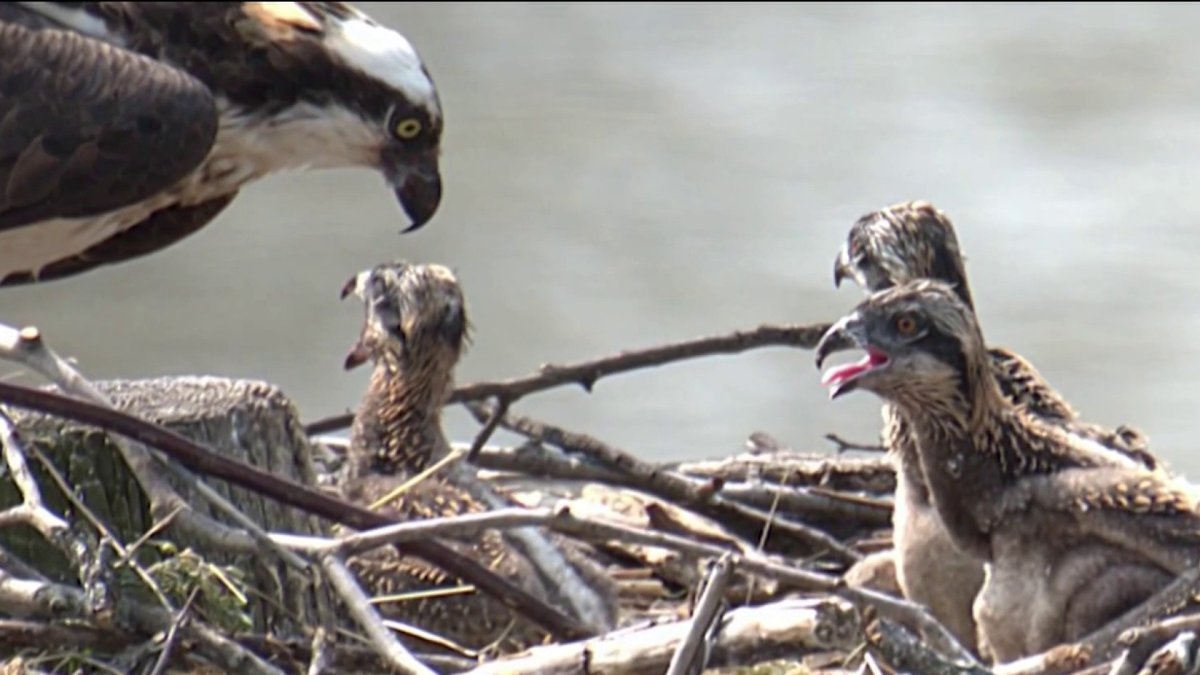Perched just below the South Capitol Street Bridge on the Anacostia River, a mother and father osprey tend their newborn chicks.
That family is just one of dozens of osprey nests in D.C., with more than 30 chicks born this year.
Dan Rauch, who’s been tracking ospreys in the District with the D.C. Department of Energy and Environment for the past 15 years, says it’s a good sign for the area’s rivers.
But the story is different along the Chesapeake Bay.
The bay region is home to about 20% of the world’s osprey population, but in the past few years, the population has declined in the southern Chesapeake Bay.
While ospreys in D.C. have a 73% success rate for new chicks born, Rauch said, that number is only about 10% in the lower Chesapeake.
“Birds really are the canary in the coal mine, and osprey are that for the Chesapeake Bay region,” Rauch said. “They’re here in big numbers. So, when we start to see such steep declines, we know something is wrong. They’re trying to tell us that something is going on, whether it’s fish stocks or weather events, water temperatures, or something else we’re just not seeing or maybe that combination that’s causing that issue.”
Osprey populations were previously booming in the ’70s, ’80s and ’90s, reaching 10,000 pairs in the area before numbers started to plummet in the past few years.
Rauch and his team of volunteers monitored 26 nests in D.C. over the past few months. Nineteen of them successfully producing newborns, compared to 17 successful nests out of 167 nests in the Chesapeake.
Now, Rauch is trying to figure out what changes could be happening in the environment. It could be anything from a lack of prey to being pushed into areas that are not well-suited for them to nest.
“We’ve had these amazing weather changes, not only just strong storms, but a couple of weeks ago, we had like 40 degrees and rain right when the chicks were hatching, which caused death due to hypothermia,” he said. “And then the next week, it’s 90 degrees. So, the adults are actually having to spend their entire day shielding their chicks from the sun instead of going out and feeding, because when they’re that young, they can’t thermoregulate.”
He is still encouraged by the birds thriving in D.C. There’s even a family that calls Audi Field home.
“That’s really amazing,” Rauch said. “We can have that many chicks in such a small area. And the fact that that’s happening up here and not in the lower Chesapeake is really concerning, and it’s trying to figure that puzzle out.”
Sign up for our free deep-dive newsletter, The 4Front, to get standout News4 stories sent right to your inbox. Subscribe here.

